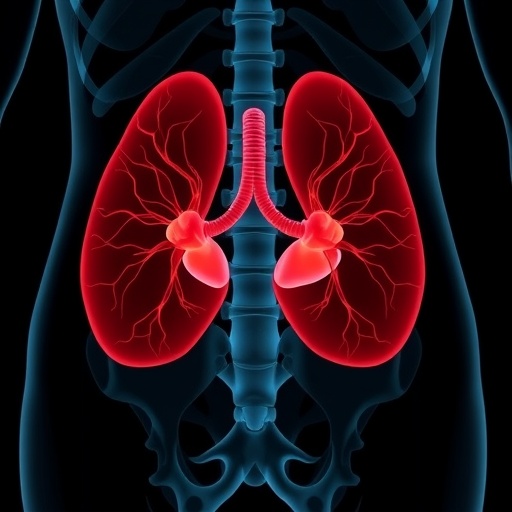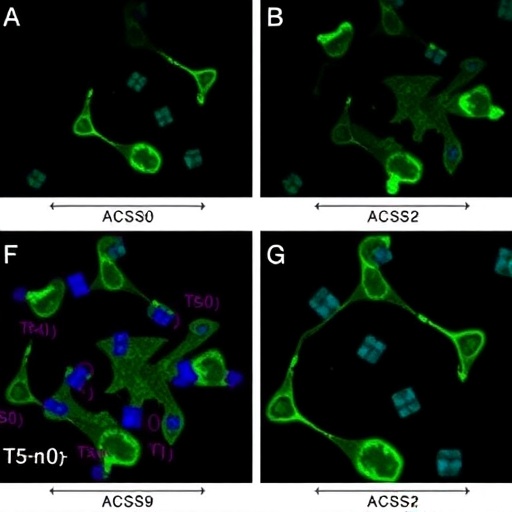In a stunning revelation that may have significant implications for public health, a recent study has examined the role of Imidacloprid, a widely used insecticide, in contributing to the progression of bladder cancer. This research, spearheaded by a team of scientists, employs cutting-edge technologies encompassing network toxicology, machine learning, and molecular docking to reveal preliminary evidence that could change the paradigm of how we view certain pesticide chemicals in relation to human health.
Imidacloprid has been utilized in agriculture for decades, primarily to combat pests. Its popularity stems from its effectiveness and comparatively low toxicity to non-target organisms. However, the long-term effects of prolonged exposure to this neonicotinoid on human health have remained largely underexplored, especially concerning cancer development. This study emerges at a critical juncture, where increasing scrutiny of chemical exposures in everyday life demands a comprehensive understanding of their ramifications.
Utilizing network toxicology techniques, this research illuminates the intricate web of biological interactions potentially disrupted by Imidacloprid exposure. Network toxicology allows researchers to map out cellular communication pathways to understand better how toxins affect cellular function. By analyzing vast amounts of biological data, the research team could identify potential tumorigenic pathways affected by Imidacloprid. This intricate mapping can lead to insights that traditional studies may overlook, highlighting vulnerabilities in human health that could arise from common pesticide usage.
Moreover, machine learning algorithms were employed to analyze and predict the potential impacts of various molecular interactions. These sophisticated computational methods enable scientists to sift through enormous datasets, identifying patterns and correlations that humans might miss. By predicting which interactions could lead to malignancies, the researchers provided a clearer picture of how Imidacloprid might facilitate bladder cancer progression. Such predictive modeling represents a monumental step towards personalized medicine, where treatments and preventive measures can be tailored to individual exposures and risks.
Additionally, the study utilized molecular docking techniques to simulate the interactions between Imidacloprid and specific proteins associated with bladder cancer. This mechanistic approach allowed the researchers to investigate how the pesticide might bind to cellular receptors and alter their function. By elucidating these binding mechanisms, the study offers potential targets for therapeutic intervention and underscores the critical need for environmental and medical professionals to reconsider the safety profiles of commonly used chemicals.
While the findings of this research are certainly alarming, it is crucial to approach them with a balanced perspective. The study is marked as preliminary, meaning that further investigation is necessary to establish a definitive causal relationship between Imidacloprid exposure and bladder cancer progression. Nevertheless, it serves as an urgent call to action for both researchers and policymakers to prioritize further examination of chemical safety in agricultural practices.
The implications of these findings exceed the confines of academic interest, potentially influencing regulatory frameworks regarding pesticide usage. As the body of evidence grows concerning the harmful effects of synthetic chemicals on human health, regulatory bodies may find themselves compelled to reassess the approval processes for agricultural chemicals like Imidacloprid. Such an evolution in policy would aim to safeguard public health while balancing the agricultural industry’s need for effective pest control solutions.
Moreover, public awareness surrounding the dangers of pesticide exposure could fuel shifts in consumer behavior. As consumers become educated about the potential health risks associated with chemical residues in food, a more significant demand for organic and sustainably farmed products could emerge. This transition may not only benefit public health but also encourage agricultural practices that are crucial for environmental sustainability.
In addition to the findings regarding Imidacloprid, this research emphasizes the importance of interdisciplinary approaches in toxicology. The collaboration of fields such as computational biology, environmental science, and medicine is essential to unearthing the multifaceted effects of chemical exposures. By interlinking expertise from diverse domains, researchers can accurately portray the health threats posed by commonly used substances in our ecosystems.
Moreover, the study raises pertinent questions about the regulatory thresholds set for pesticide safety. Existing guidelines may need updates, considering emerging data indicating that even low levels of chemical exposure can result in adverse health outcomes. A thorough reevaluation of acceptable limits is essential to safeguard communities, especially in regions heavily reliant on agricultural outputs.
Despite the challenges, the research opens the door to potential avenues for future studies aimed at understanding the complex interplay between environmental exposures and cancer progression. As science progresses, developing methodologies to explore these relationships will define future research agendas in environmental toxicology. It may also help facilitate the creation of preventive strategies that can mitigate the health risks posed by pesticides.
In conclusion, the implications of this pioneering study on Imidacloprid extend far beyond mere scientific inquiry. They serve as a wake-up call, urging all stakeholders—researchers, policymakers, and the public—to respond proactively to the potential health crises hidden in the chemicals we often take for granted. As further studies are conducted and our understanding deepens, society may be better equipped to confront the looming challenge of chemically-induced health risks.
Recognizing the need for vigilance regarding chemical exposures, particularly those related to agricultural practices, this research underscores the importance of continued scrutiny into the safety and long-term effects of pesticides like Imidacloprid. As this discourse unfolds, the hope remains that proactive measures will lead to enhanced health outcomes for current and future generations.
Subject of Research: The contribution of Imidacloprid to bladder cancer progression.
Article Title: Imidacloprid contributes to bladder cancer progression: preliminary evidence based on network toxicology, machine learning and molecular docking.
Article References:
Ming, J., Jin, S., Liu, Z. et al. Imidacloprid contributes to bladder cancer progression: preliminary evidence based on network toxicology, machine learning and molecular docking. BMC Pharmacol Toxicol 26, 180 (2025). https://doi.org/10.1186/s40360-025-01016-9
Image Credits: AI Generated
DOI:
Keywords: Imidacloprid, bladder cancer, network toxicology, machine learning, molecular docking, pesticide exposure.
Tags: agricultural chemicals and human health riskscellular communication pathways and toxinsImidacloprid and bladder cancerinsecticide safety and cancerlong-term effects of insecticidesmachine learning in toxicologymolecular docking techniques in cancer studiesneonicotinoids and health risksnetwork toxicology and cancer researchpesticide exposure and human healthpublic health implications of pesticidestumorigenic pathways affected by pesticides





